As the birthplace of The Beatles and home to one of the UK’s mightiest football clubs, Liverpool needs little introduction. But the third-most populous city in the UK offers so much more than music and soccer.
With its rich maritime heritage, striking architecture and buzzy cultural scene, there are many reasons to spend a weekend in Liverpool. To convince you to book a city break, here are the best things to do in Liverpool and practical information to help you make the most of your time in this captivating city.

Some articles on this website contain affiliate links. This means that I may earn a small commission if you make a purchase through these links. As an Amazon Associate, I earn from qualifying purchases. Read the full disclosure here.
Why You Should Spend a Weekend in Liverpool
To walk in the steps of The Beatles
Fans of the Fab Four won’t feel short-changed during their weekend in Liverpool.
Start your homage at The Beatles Story, an award-winning museum on the Albert Dock that packs a real emotional punch. A chronological journey charts John, Paul, George and Ringo’s progress from their humble beginnings as schoolboy musicians through to their solo careers after the band’s acrimonious break-up.
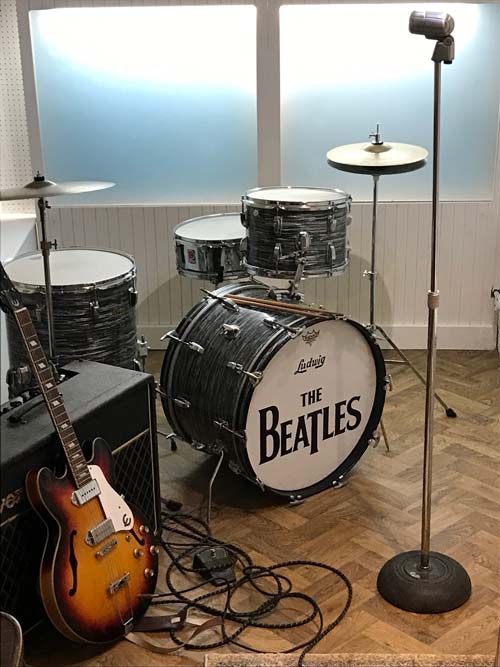
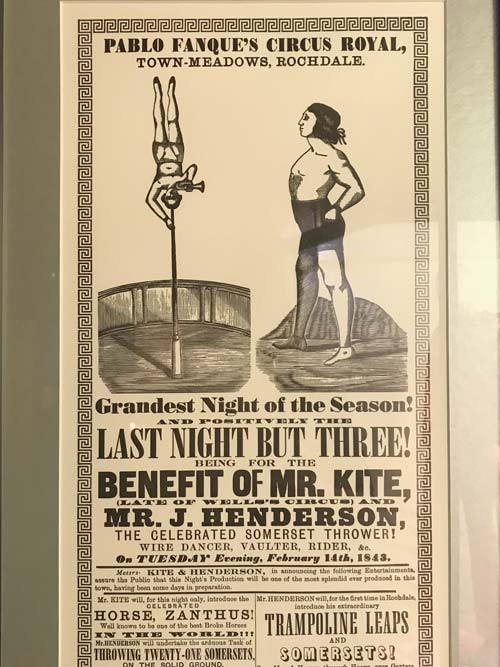
Even as a lifelong Beatles fan, I learnt new things.
There is a recreation of the place where it all began, the Casbah Coffee Club in the basement of Pete Best’s family home, as well as the better-known Cavern Club and Matthew Street.
>>> Skip the line and buy your Beatles Story ticket here with free cancellation up to 24 hours in advance
Continue your Beatles pilgrimage by joining The Magical Mystery Tour (yes really). A witty nod to the 1967 film and album, there are no surprises here and this colourful bus takes you on a 2-hour tour of places associated with John, Paul, George and Ringo.
Starting at the Albert Dock and finishing at the Cavern Club, this guided tour takes you to The Beatles’ childhood homes, schools and colleges, and to Penny Lane and Strawberry Field.
Alternatively, why not book a 3-hour private taxi tour to visit Beatles-related sites across Liverpool? Find out more here.
To visit the regenerated Albert Dock
Opened in 1846, Albert Dock was at the heart of Liverpool’s docks, through which 40% of world trade passed at that time. At a cost of the equivalent of £41 million today, vast fireproof warehouses were built on its quaysides to securely store goods that were arriving from across the globe.
During World War II, Liverpool’s docks became a target for German bombers and Albert Dock sustained heavy damage in the May Blitz of 1941. Although awarded Grade I listed status, Albert Dock was largely abandoned in the early 1970s until a conservation project began ten years later.
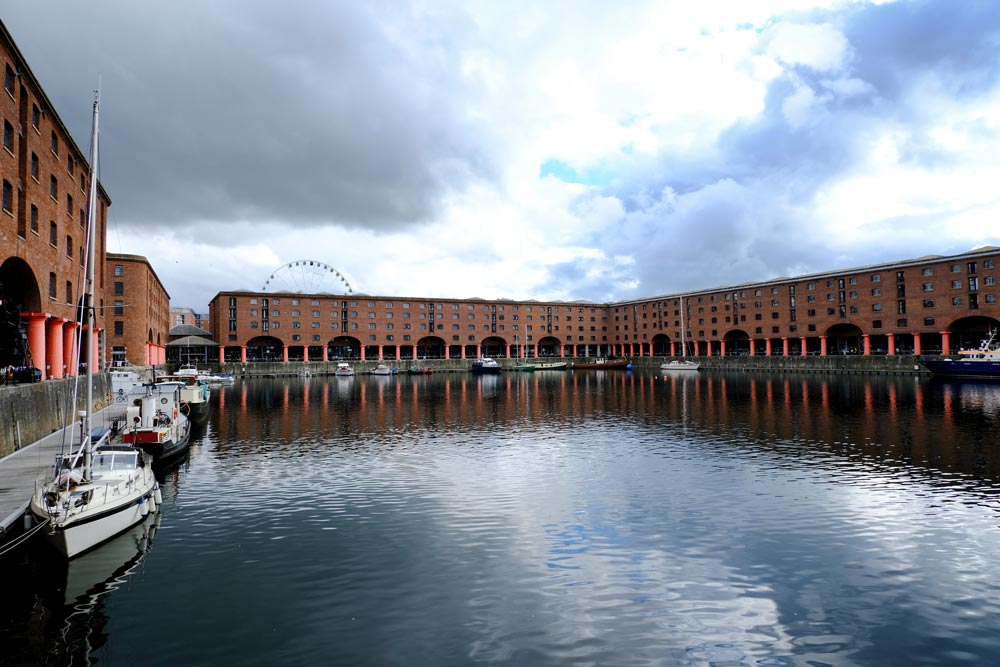
Today’s Albert Dock proudly showcases Liverpool’s rich industrial history and is home to cultural giants including The Beatles Story, Tate Liverpool, Merseyside Maritime Museum and the International Slavery Museum. The former warehouses are also home to an eclectic selection of shops, bars, restaurants and hotels.
To learn more about the slave trade
Liverpool doesn’t shy away from its role in the international slave trade. Although the city was a late entry, by 1740 it was the slave-trading capital of Britain.
The International Slavery Museum focuses on the history and legacy of the slave trade and is one of the unmissable things to do in Liverpool.
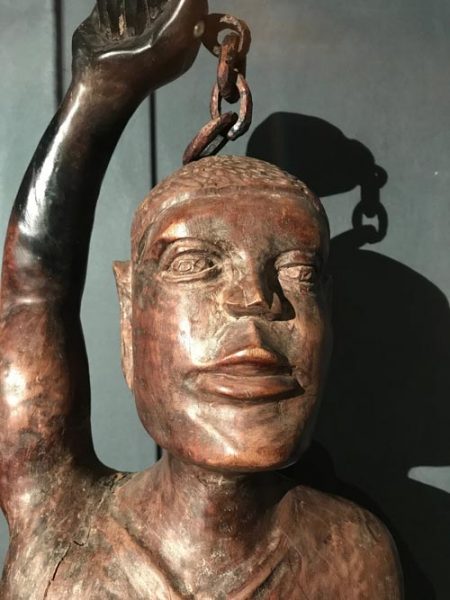
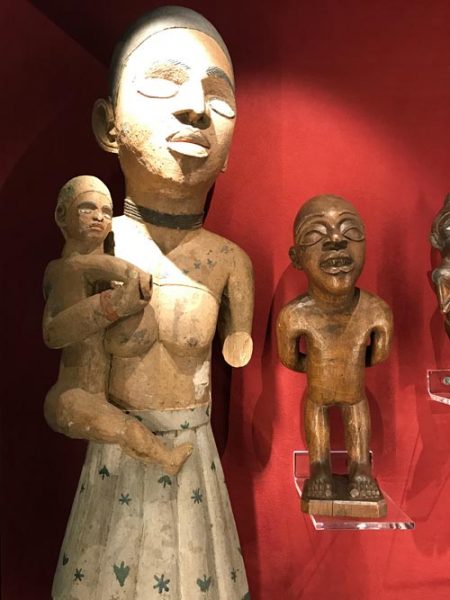
It starts with an exploration of the culture and traditions of Western Africa through its arts, music and villages, before examining the genesis of the slave trade and its legacy, including current global inequalities. Throughout the collection, first-hand accounts from those involved in, and impacted by, the slave trade bring its narrative vividly to life.
For a slice of maritime history
Housed in the same building as the International Slavery Museum, the Maritime Museum celebrates Liverpool’s seafaring past.
There is a wonderful collection of shipping posters evoking an era when international travel was uncommon and exotic. These posters are works of art in themselves.
The museum’s other excellent collections are devoted to two maritime tragedies that had strong connections with Liverpool: the Titanic and the Lusitania.
Registered in Liverpool, the Titanic was submerged by an iceberg in 1912 on her maiden voyage from Southampton to New York. The city was also the home port for the Cunard passenger liner Lusitania which was sunk by a German U-boat in 1915 off Ireland’s coast.
For Liverpool’s world-class art galleries
Liverpool certainly packs a punch when it comes to art galleries. Albert Dock is home to the new kid on the block, Tate Liverpool, a sister (or brother) to the London Tate Galleries.
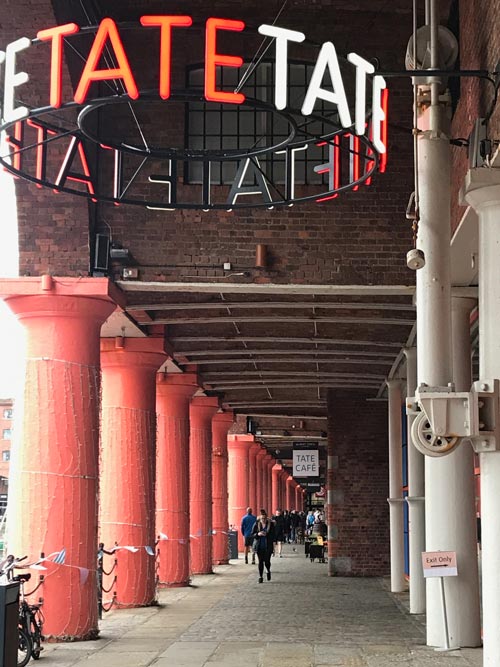
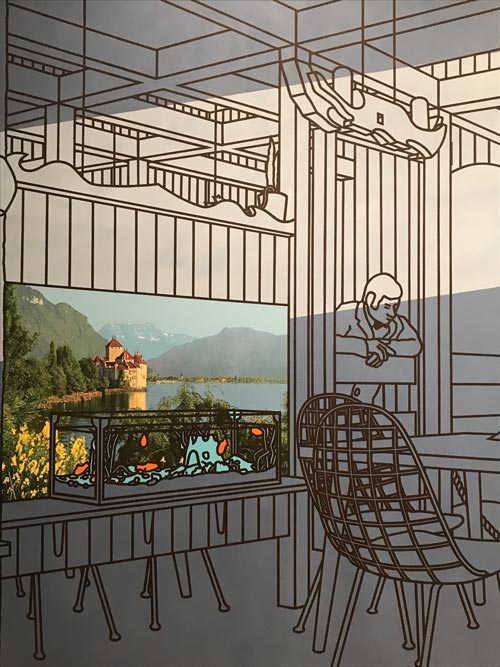
I’m not a massive fan of modern and contemporary art but I loved Tate Liverpool. It’s small enough to visit within an hour or so without developing gallery fatigue, and features works by the likes of Picasso, Matisse, Henry Moore and Patrick Caulfield.
If modern and contemporary art isn’t your thing, fear not. Liverpool’s Walker Art Gallery houses a collection with a broader scope, exhibiting artworks from the 13th Century to the present day.
Last but not least, the Lady Lever Art Gallery is considered one of Europe’s finest art galleries and is renowned for its collection of Pre-Raphaelite paintings.
For Liverpool’s superb architecture
From the moment you step out of Lime Street Station, you can’t help but be wowed by Liverpool’s architecture.
With its sculpted friezes and majestic Corinthian columns, St George’s Hall is a magnificent example of Neoclassical architecture. Close by are three more beautiful buildings: the aforementioned Walker Art Gallery, Liverpool Central Library and the World Museum.
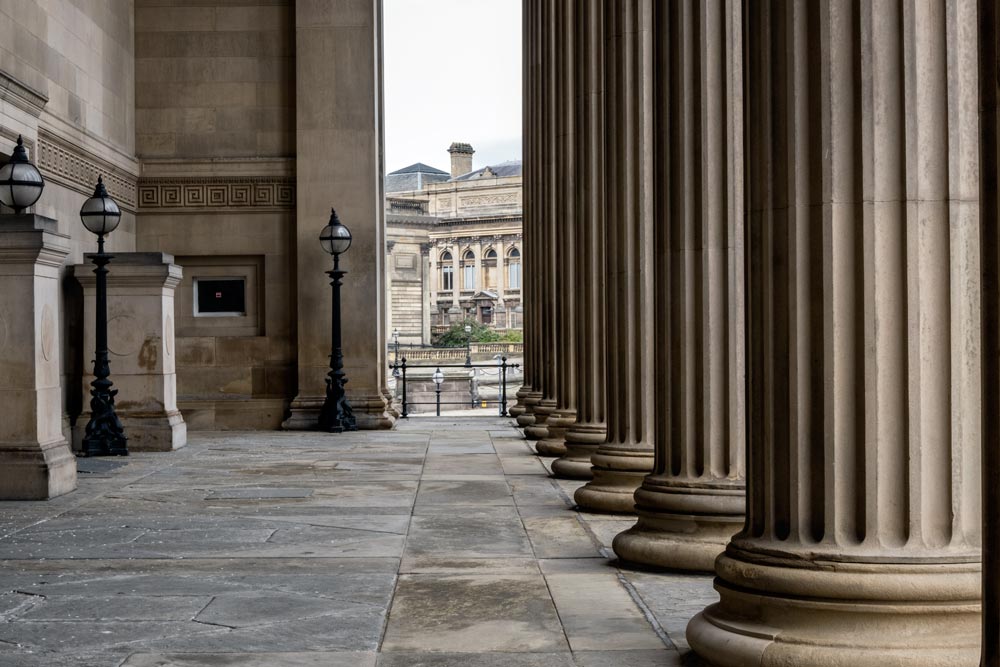
Liverpool’s buildings tell the story of a port of worldwide importance. Whilst the city’s fortunes declined in the twentieth century, it subsequently experienced a renaissance as a cultural capital.
Sitting proudly on Liverpool’s dockside are Liverpool’s most famous buildings, the Three Graces. Situated on the Pier Head, this ensemble of the Royal Liver Building, The Cunard Building and the Port of Liverpool Building defines one of Europe’s most iconic city skylines.
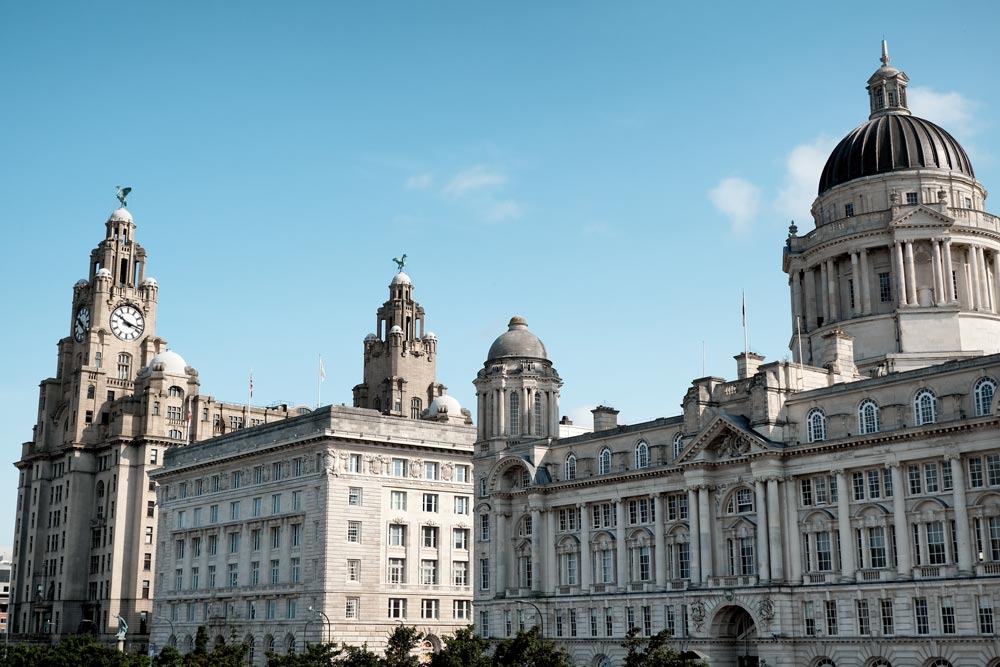
RECOMMENDED GUIDE BOOK: If you are interested in knowing more about Liverpool’s wonderful buildings, get your hands on the Pevsner Liverpool City Guide. It’s packed with lots of information and opinions and features useful walking tours.
To visit exceptional cathedrals and churches
But my favourite buildings in Liverpool are its two cathedrals.
Connected by the wonderfully named Hope Street, the Metropolitan Cathedral of Christ the King Liverpool (Roman Catholic) and Liverpool Cathedral (Anglican) couldn’t be more different architecturally.
Affectionately known locally as Paddy’s Wigwam, the Metropolitan Cathedral was built between 1962 and 1967 to accommodate the city’s burgeoning Catholic population. Its original architect was Edward Lutyens who was also responsible for the Cenotaph and Hampton Court Bridge, one of the famous bridges of London.
Its grey concrete with stone-clad exterior houses a glorious light-filled circular interior.
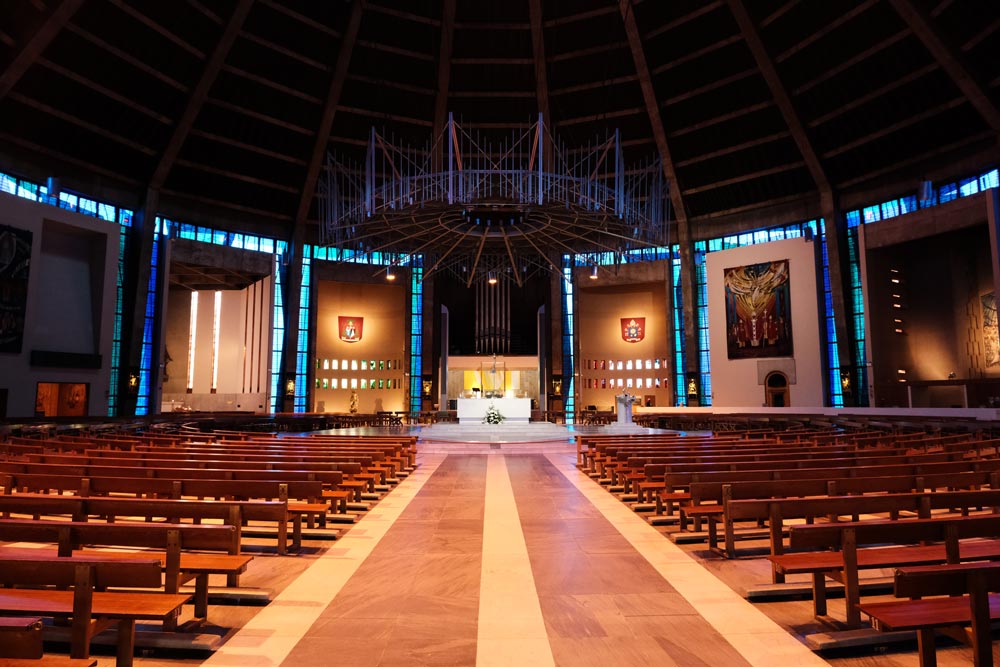
By contrast, Liverpool’s Anglican Cathedral, the largest cathedral and religious building in Britain, is pure Gothic Revival in all of its pointy splendour. Based on a design by the great Giles Gilbert Scott, the cathedral was built between 1904 and 1978.
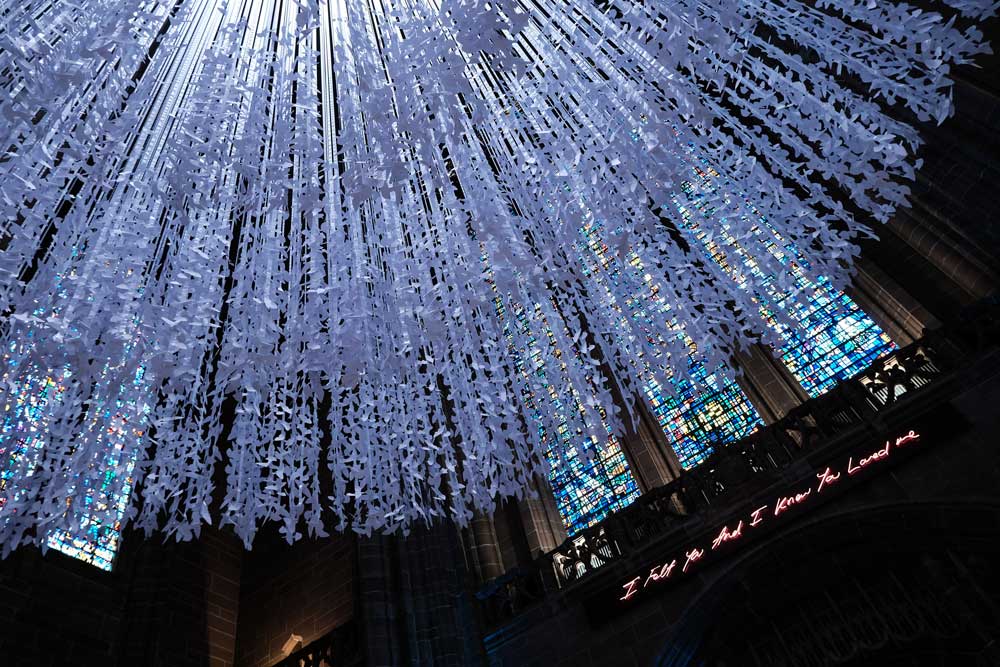
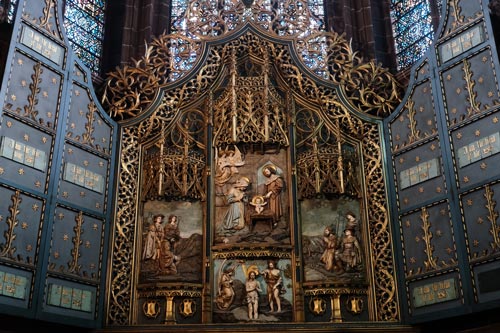
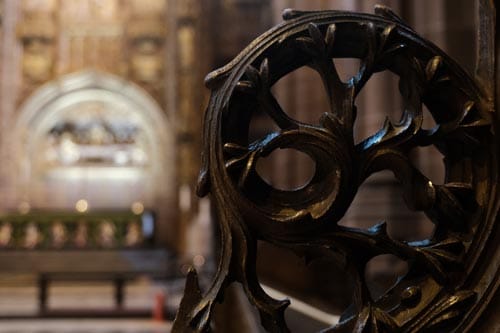
It is free to visit both cathedrals. Check their respective websites for opening hours.
For a church building with a difference, stop by St. Luke’s. Also known as the bombed-out church, this former Anglican church was all but destroyed in the May 1941 Blitz, leaving only its external masonry standing.
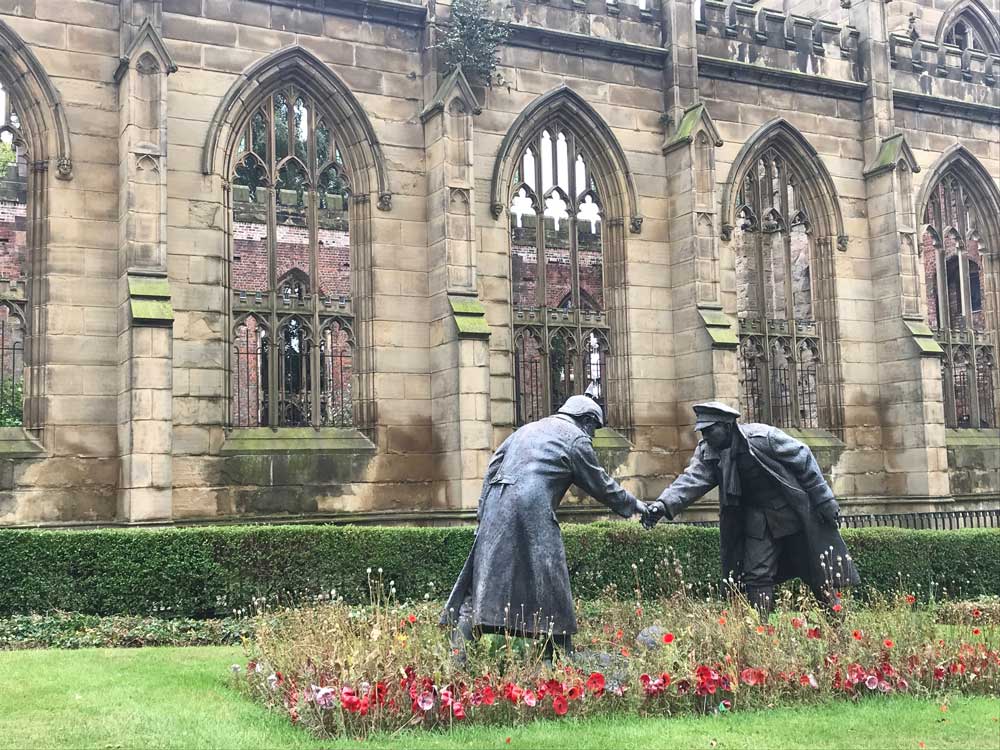
To take a ferry across the Mersey
The River Mersey is synonymous with the city of Liverpool itself. Immortalised by the Gerry and the Pacemakers’ 1965 hit, one of the best things to do in Liverpool is to take a ‘Ferry Cross the Mersey’ for an iconic view of the city’s waterfront.
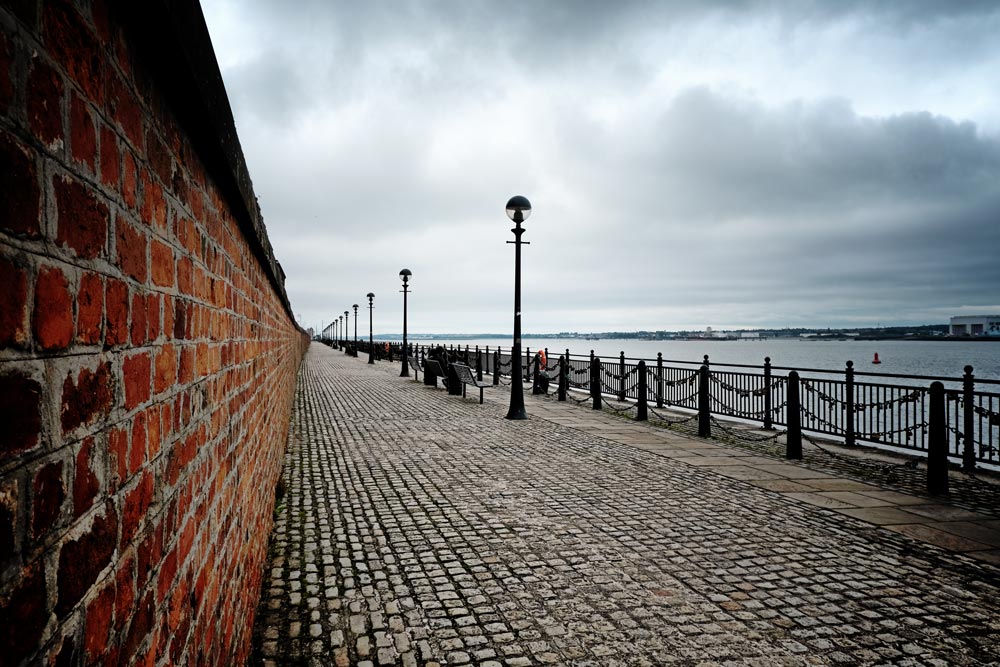
There are a few ways to do this.
You can take the commuter ferry service between Pier Head and Birkenhead. Whilst this is the cheapest option, it only operates for two hours in the morning and again in the evening, to meet commuters’ needs.
A more flexible and convenient way to take to the water is to join a 50-minute River Explorer Cruise, which includes a commentary.
>>> CLICK HERE TO BOOK A TICKET
To visit Another Place
My main motivation for booking a weekend in Liverpool was to visit Crosby Beach, the setting for Antony Gormley’s Another Place.
This installation of 100 cast-iron, life-size figures standing on three kilometres of the foreshore, and stretching almost one kilometre out to sea, is an extraordinary sight. Made from casts of the artist’s body, each figure weighs 650 kilos and looks towards the horizon in silent contemplation.
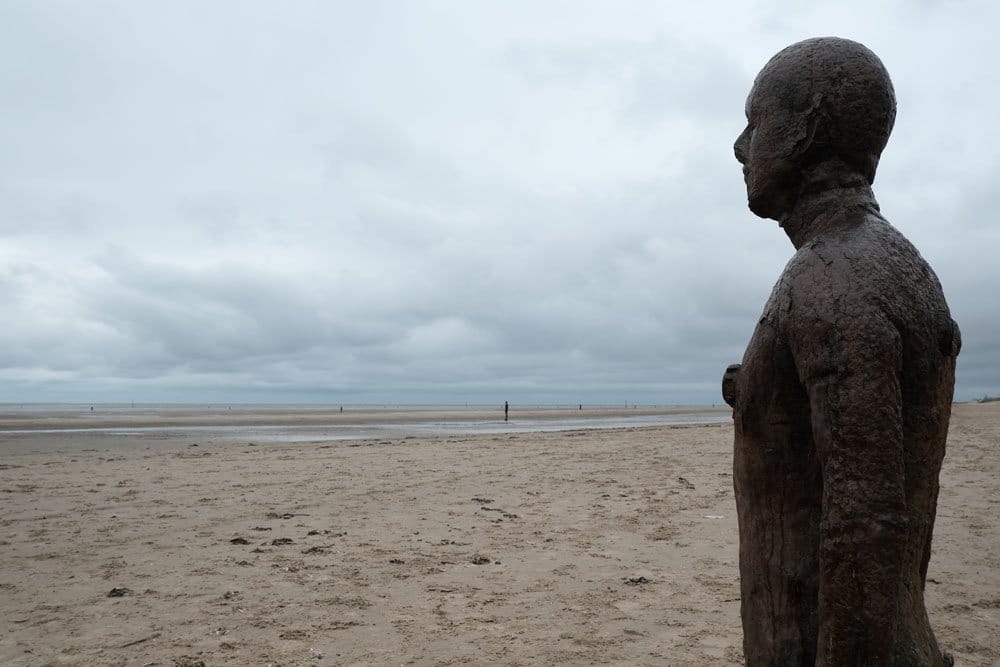
According to the artist, Another Place harnesses the ebb and flow of the tide to explore man’s relationship with nature. These figures were previously residents of Cuxhaven in Germany, Stavanger in Norway and De Panne in Belgium.
To go red squirrel hunting in Formby Forest
Why not combine a visit to Another Place with a spot of red squirrel hunting?
Once a common sight across the UK, the numbers of red squirrels have declined since the introduction of the North American Grey Squirrel in the 19th Century. Follow the two-mile red squirrel walk in the woodlands surrounding Formby to spot one of these rare native mammals.
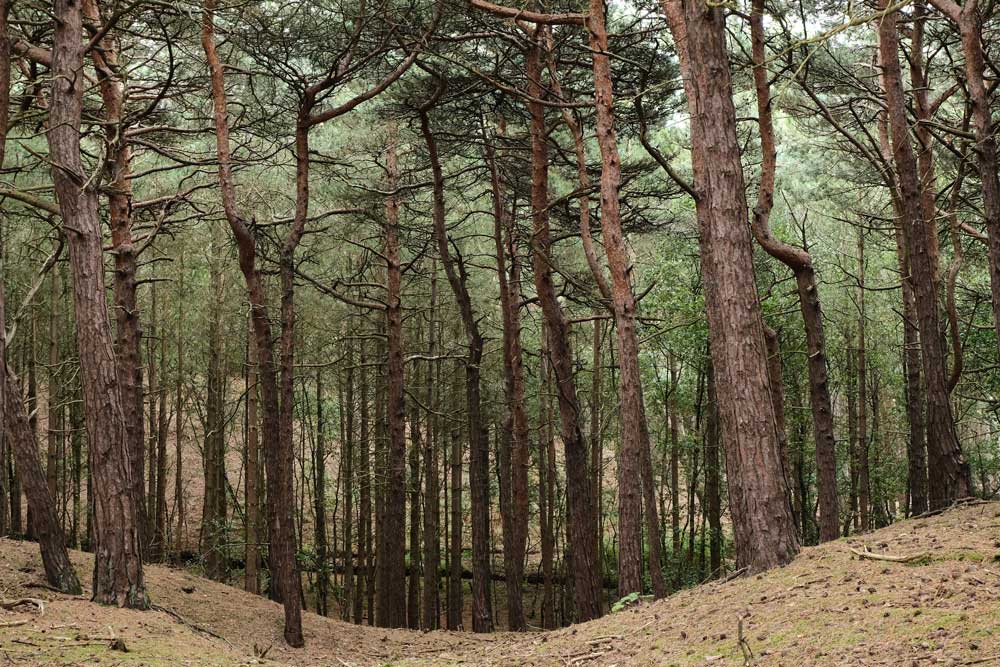
When you’re finished, walk the short distance to the sand dunes of Formby beach.
For its food scene
Liverpool punches above its weight when it comes to dining out and is more than a match for the food in London.
Maray on Albert Dock specialises in small plates from the Middle East and has one of the best – and most unusual – wine lists that I have come across. Macedonian Kratoshija anyone? Their Disco Cauliflower is a must-try.
For American-style mega breakfasts try Moose Coffee. You’ll feel like you are back in New York City.
My one regret was that I couldn’t get a table at Mowgli, a “real Indian food” restaurant established by a Barrister-turned-curry-evangelist that has garnered rave reviews.
To pay homage at Anfield
Liverpool is a city of passionate football rivalries: Everton (“the Blues”) and Liverpool (“the Reds”).
If you are a footie fan, the next best thing to attending a match is to visit Anfield, the home of Liverpool FC. Anfield offers stadium tours 7 days a week, from 10 am until 3 pm, depending on fixtures.
>>> Click here to book a stadium tour
Scousers
Finally, there are the locals.
Scousers are amongst the friendliest and funniest people in the world. The phrase ‘salt of the earth’ comes to mind.
I dare you to attempt the accent.
Getting There
Liverpool is easily reached by train, bus, plane or by car.
Liverpool Lime Street is the central station, served by trains from most major cities in the UK. The other major train stations in Liverpool are James Street, Liverpool Central, and Moorfields.
From London, the train service is operated by Avanti West Coast and the journey time is a little over two hours.
National Express and Megabus operate services from major cities and towns to Liverpool One Bus Station.
If you are visiting from further afield, the closest airport to the city is Liverpool John Lennon Airport from where you can catch a train or bus into the city. You can also reach Liverpool from Manchester Airport.
By road, Liverpool is connected by the M6, M56 or M62.
Getting Around
Most of Liverpool’s main attractions are in its compact city centre, making exploring it on foot a breeze. The only time you’ll need to use public transport is if you are travelling to or from the airport or visiting the city’s outskirts.
But if you want to see all the sights in one fail swoop, you can book a ticket for the hop-on-hop-off bus or take a City and Beatles Open Top Bus Tour.
Merseyrail, which you will use if you visit Crosby or Formby, links Liverpool with the Greater Merseyside area.
Liverpool has an extensive bus network.
Where to Stay in Liverpool
Central Liverpool centre is made up of a collection of quarters, rooted in the city’s history, each of which has a distinct identity.
- Albert Dock – to be on the doorstep of the city’s waterfront and some of its best museums and galleries
- Baltic Triangle – a trendy neighbourhood that is home to great restaurants and bars
- Ropewalks – budget-friendly and bohemian quarter.
Premier Inn, Albert Dock
I stayed at this affordable mid-range chain hotel next door to The Beatles Story. It’s not perfect but the price and location are unbeatable for your first visit to Liverpool.
Get the lowdown on this hotel in my Premier Inn Albert Dock review.
>>> CLICK HERE TO CHECK RATES & BOOK
SPLURGE
Titanic Hotel Liverpool
This stylish 4-star hotel, housed in a former warehouse at Stanley Dock has attracted superb reviews, especially for the levels of customer service. The downside is that its location is not as central as other accommodation options.
>>> CLICK HERE TO CHECK RATES & BOOK
Holiday Inn Liverpool City Centre
This 4-star hotel is a more centrally-located high-end alternative, located close to Lime Street Station. Reviews are similarly great.
>>> CLICK HERE TO CHECK RATES & BOOK
MID-RANGE
Staybridge Suites Liverpool
I’m a fan of this IHG Hotel brand, having booked a room at the Staybridge Suites during a visit to Newcastle. These self-catering suites are located close to Albert Dock.
>>> CLICK HERE TO CHECK RATES & BOOK
BUDGET
The Z Hotel
Located close to The Cavern, rooms at this budget hotel offer city views, a comfortable bed and a 40” television.
>>> CLICK HERE TO CHECK RATES & BOOK
>>> None of these places take your fancy? Discover other great accommodation choices in Liverpool.
Is Liverpool Safe for a Solo Traveller?
Central Liverpool is relatively safe for solo travellers, but take the same precautions as you would in any big city. Pickpockets pose the biggest threat to visitors so keep a close watch on your valuables, especially in crowded places.
Keep your wits about you and you should have a trouble-free stay.
Why Liverpool is the Perfect City Break
Liverpool has many of the ingredients for a perfect city break and two or three days is enough time to get a feel for the city and visit some of its main attractions.
Not only does it wear its rich history on its sleeve, and has a wealth of architectural and cultural gems, it also has a vibrant nightlife and foodie scene. The city is blessed with excellent transport links and because it is compact, visiting its attractions is super easy.
As it is only a little over two hours away by train, you could even visit Liverpool as a day trip from London. However, as it deserves more than a rushed visit, I urge you not to do this.
You won’t regret spending a weekend in Liverpool.

About Bridget
Bridget Coleman has been a passionate traveller for more than 30 years. She has visited 70+ countries, most as a solo traveller.
Articles on this site reflect her first-hand experiences.
To get in touch, email her at hello@theflashpacker.net or follow her on social media.
